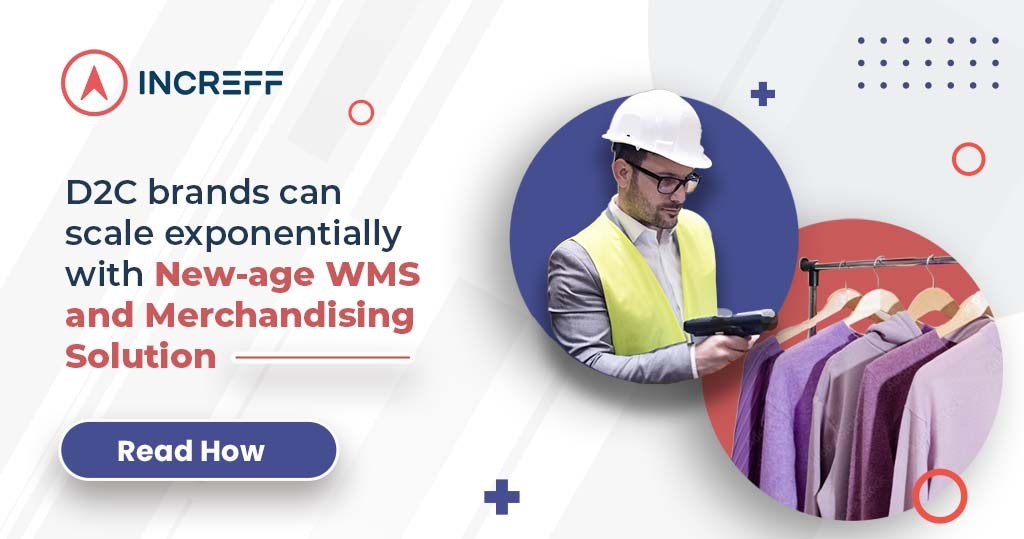D2C e-commerce is growing faster with increasing penetration of mobile and internet services, and the mushrooming growth of 3PL companies, especially in the urban areas. It offers benefits like cost-cutting, greater control of the supply chain, better quality management, and more efficient returns management.
All this requires automated support in terms of inventory storage, order management, packaging, and logistics. This is where a new-age Warehouse Management Solution (WMS) plays a crucial role in inventory management for D2C businesses.
Inventory management and merchandise planning for e-commerce
As soon as brands take charge of their supply chain, a number of technical areas demand attention. Foremost is optimizing warehouse space to expedite order picking and smoothen overall order processing. Synchronizing incoming orders and inventory, establishing the best possible floor plans, and picking rules, are some of the prime functions of a new-age WMS.
Maintaining inventory accuracy with unique piece barcoding assigned to each incoming piece in the warehouse is critical. Hand-held devices used for order picking, synchronize with the WMS and display complete product information on scanning the barcodes. The barcodes capture individual product details to help detect their exact location within the warehouse. It increases accountability by recording details of every action performed on the item within the warehouse, and also ensures order picking efficiency, enhances accuracy, and prevents errors.
Assortment planning, space management, and in-season planning are some aspects of inventory management orchestrated by an automated inventory management solution. These solutions make use of analytics and algorithms to ensure inventory planning is aligned with the long-term strategy of a brand for a given customer segment.
Managing returns and rapid re-commerce
Returns management is a serious concern for growing brands. To keep returns under check and the cost of re-commerce under control, D2C returns management requires an automated solution.
An automated WMS helps brands accept incoming orders, sync with the inventory, and ship them as soon as possible. It helps trace returns, avoids delays, streamlines return management, and reduces the cost of return logistics. Products spending too much time on their way back to the warehouse are at a greater risk of getting damaged. Returns management solution finds the shortest route back, enabling brands to expose the stock for resale as soon as possible. It sorts products into categories such as refurbished, resalable, and unsaleable, based on which it disperses them in the value chain. As D2C brands seek to gain complete control of their supply chain, a comprehensive returns management policy is necessary and must be centered on automated returns management software.
Markdown optimization for D2C brands
Setting the right price could be a daunting task for brands. Going too low could affect their relationship with retailers and confuse customers about the authenticity or quality of the products. Dynamic pricing, based on data-driven algorithms, takes into account a diverse set of factors like competitors’ prices, demand-and-supply dynamics, and levels of inventory. Dynamic pricing in e-commerce helps brands keep their pricing aligned with their channel strategy in a given marketplace.
Demand-based inventory distribution
For brands expanding over larger geographies, distributing inventory to multiple warehouses, so that the products are located closest to the customers, is the best way to reduce costs and ensure quick fulfillment. As brands expand their businesses, it becomes more expensive to ship products from a single warehouse as compared to renting out space at multiple locations. Tools such as Increff Regional Utilization ensures brands and retailers have the right levels of inventory as close to their customers as possible. The tool is completely web-based and performs millions of computations within minutes to find the right level and style of stock for each fulfillment center.
D2C poses a number of challenges for brands but automation offsets these by providing sharp insights, precise allocation, and efficient handling. This makes brands highly competitive by keeping a check on delays, costs, labor overheads, and space or stock wastage.





